She spoke the words with the ease of someone whose working life is spent stringing the same clinical syllables together—Lorazepam, Quetiapine, Citalopram, Zopiclone, Sevredol, Diazepam. But there was a weariness to this mantra too, and not just because Tika Rayner has been nursing for 35 years. Six years ago her granddaughter Tammara, who lives in Tika’s West Auckland home, became addicted to synthetic cannabis. Tika became Tammara’s primary carer as she struggled with her addiction, and struggled to end it.
We spoke among the clutter of the lounge, the kitchen bench piled with dishes, the coffee table between us buried in traffic tickets, bills, and remote controls, the tiny figures of an ignored game scurrying across the screen of a tablet. The air was oily with the smell of Tammara’s menagerie—perhaps eight cats, half as many dogs, rabbits, birds, a turtle in the swimming pool—that shares the residence.
Videos by VICE
Tika is scathing about the various rehabilitation services Tammara has grappled with over the years—“bloody hopeless, bloody hopeless” was her assessment. The system, she says, is a piecemeal mess of overlapping agencies; consequently, the promised wraparound support never materialised. “What I found is a lot of these places only deal with the drug aspect. If I look at the acquaintances I know of Tammara’s who have been on it or are on synthetics, I would say only maybe 10 percent are straight synthetics users who can just go [to rehab] for the drug. The other 90 percent have got mental-health issues or other health issues.”
“Tammara did a detox… We went there for the interview. When we did the admission, I said, ‘You are going to look at her holistically?’ ‘Yeah, yeah, yeah.’ Six hours later they were going to send her home by bus.” Incensed not only that someone so obviously fragile—suffering horrendous withdrawals, agitated, scared—would be sent across town in a bus but also that there appeared to be no contingencies for what must have been the expected erratic behaviour, Tika called the nurse in charge, making it understood that she knew what she was talking about. “They jumped around and put her in a taxi. My concern is that I checked: are you going to look after her holistically, are you going to look after her mental health? They didn’t do that. I’ve got the knowledge of the system. My concern is also for those who don’t know how the system runs.”
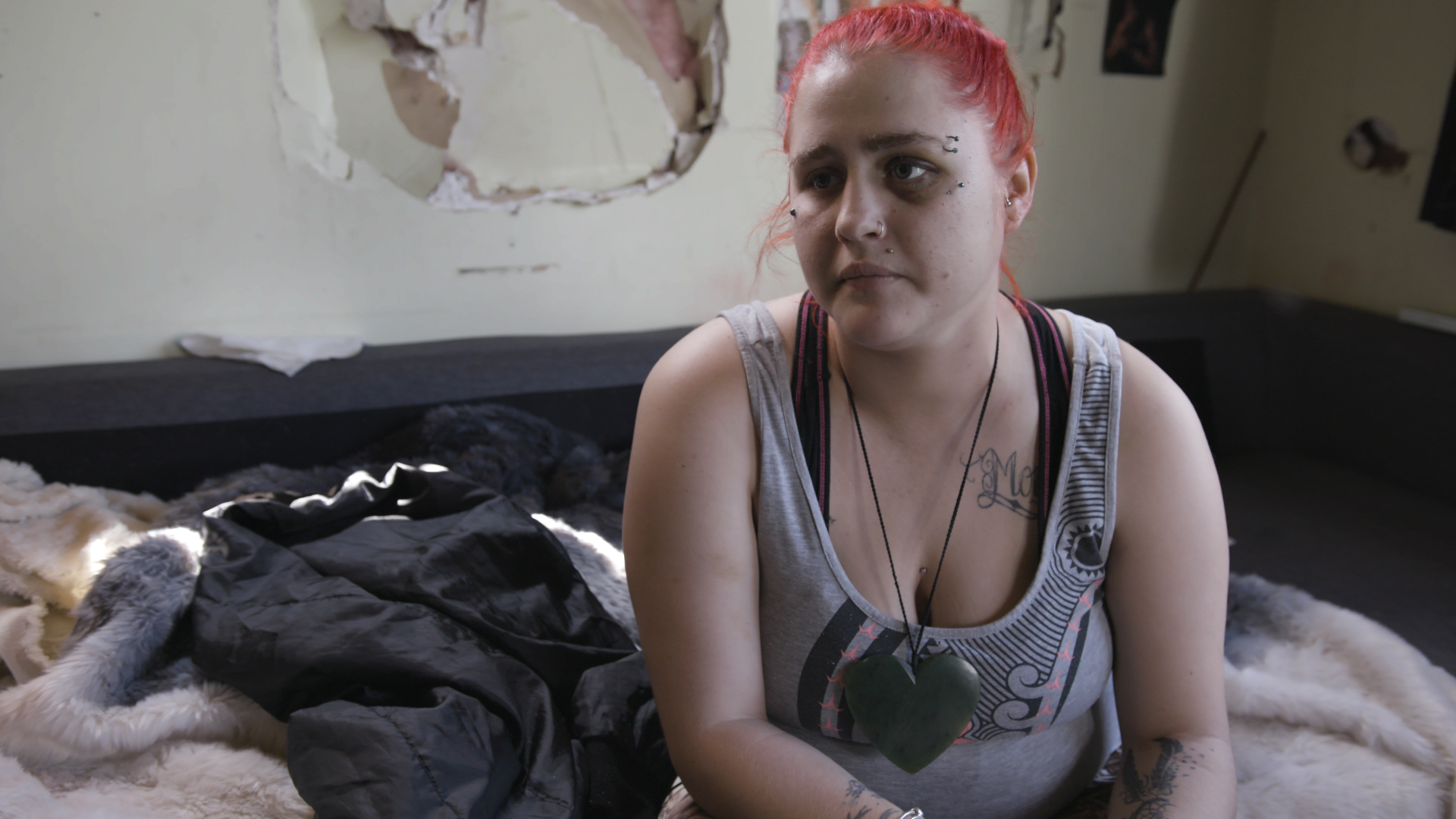
Tammara interrupted our conversation, pulling open the sliding door and dragging swirling sun-lit dust in her wake through the lounge. She was in tears, upset about a rumour she had heard about her boyfriend on Facebook. Her hair, a shock of died bright red, clashed with the pink of her track pants, the ever-present pounamu heart hanging from her neck and tattoo tear falling perpetually from the corner of her right eye. She mumbled hello through sobs and stepped back out into the sun, and to her sleepout.
Tika says Tammara’s journey towards rehabilitation has been like walking through a maze, one containing many dead ends, the names of which dotted the conversation—Community Alcohol and Drug Services (who declined to be interviewed for this article) and the institutions it administers: Altered High, Pitman House. Nowhere Tammara was directed, Tika says, addressed the ADHD or the post-traumatic stress disorder, the mental-health issues hidden beneath the addiction.
Sam*, like Tammara, became addicted to synthetics when they were still available over shop counters. “It was just convenient. It was legal; it was easy to get. You could just walk along the streets with a joint, you know? I was completely surrounded in it at one stage. I got hooked straight away. It’s so bad, man. But I didn’t realise until I had lost a few friends from smoking it.”
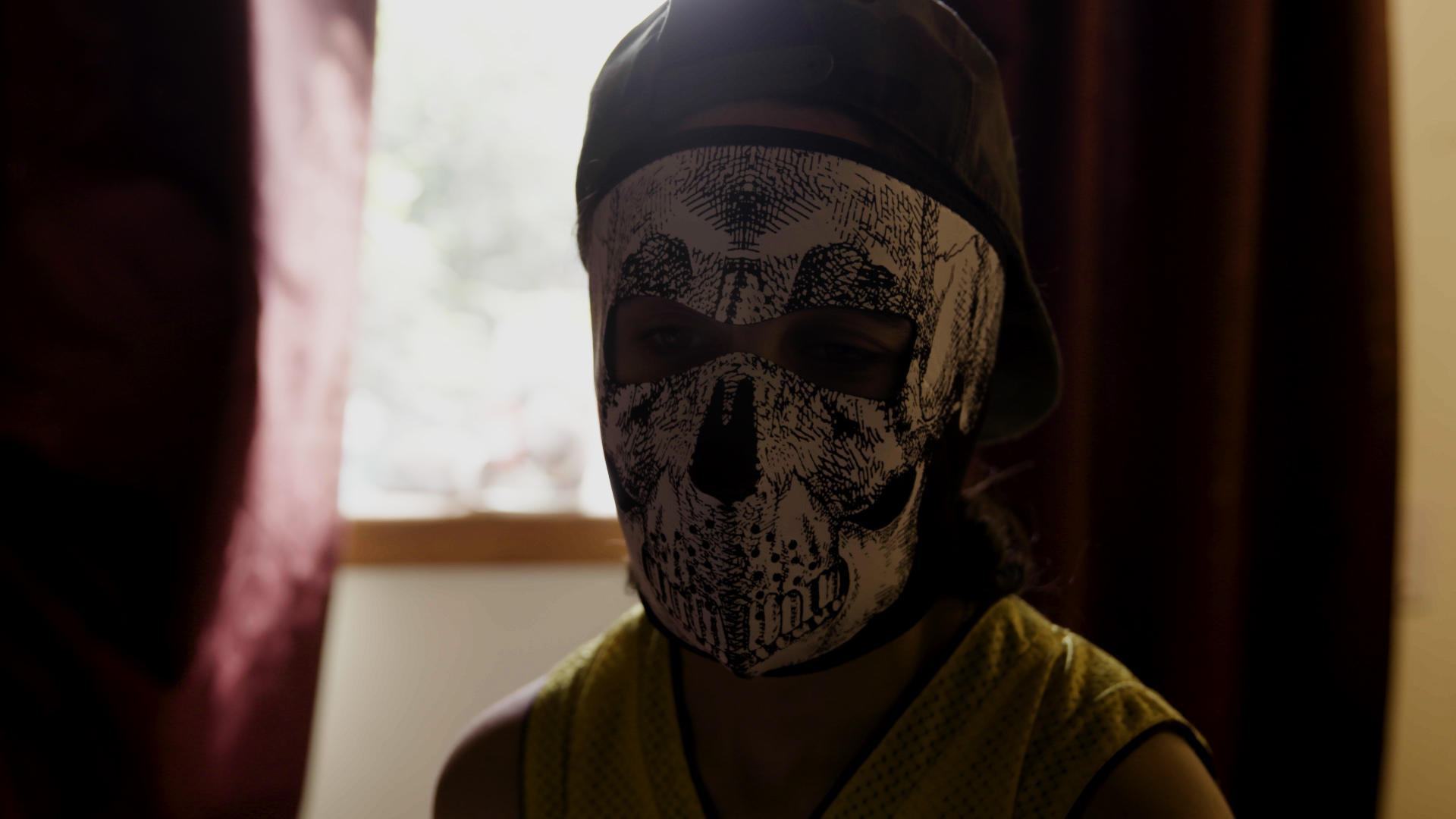
She started selling synthetics to support herself and her habit, stopping only when her source was jailed. She quit using too, and has now been clean for months, but her voice still falters when describing the difficulty of that struggle. “To quit synthetics it is… it’s a hard one, man. I guess it’s all in the individuals themselves really. It’s very, very hard. I knew a heroin addict that was 20-years plus on heroin. Before he started smoking synthetics he had been clean for a while from heroin. He was telling me that synthetics is nothing, that heroin is hard to get off. But he tried some synthetics and got hooked and he tried giving it up and he reckons synthetics was the worst. It was harder than heroin.”
One wall of Tammara’s sleepout is covered by screens. There’s an enormous TV that plays noiselessly as you talk with her, and under that a monitor relays footage from the security cameras installed around the property. Several years ago, Tammara was the victim of a brutal home invasion, during which a gun was held to her head as a dozen or so people broke into her room in the search for drugs and money, and the cameras—and the footage they provide of her dad tinkering in the driveway or dogs playing on the concrete outside—give her a sense of security.
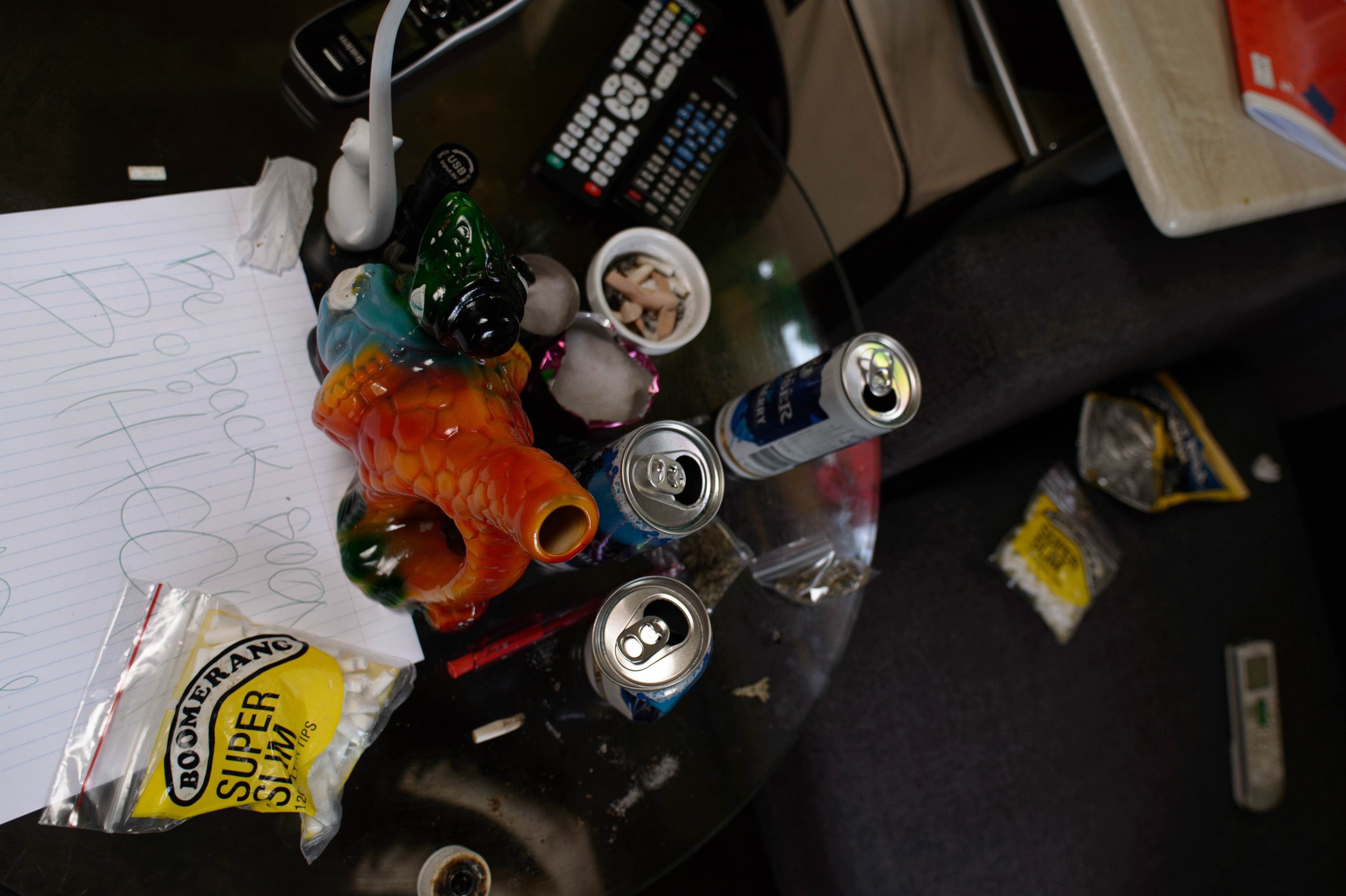
A couch, where Tammara often sleeps, sits against the opposite wall, ashtrays and Vodka Cruisers well within reach on the coffee table in front of it, incense always burning, a bowl of crystals overflowing. Bars of light shine through the haze of chain-smoked Port Royal rollies, and you usually have to compete for space with Sasha, a great big gentle mutt. Once, after getting up from the couch after 20 minutes, about to leave, Tammara asked if I had met her new dogs. I said I hadn’t. She coaxed two as-yet-unnamed puppies—black, sleek, beautiful, with the huge paws of the nascently enormous—from where they had been sitting under the couch, unnoticed during my stay.
One morning late last year, a team of health workers and police stole across the screen: they had come, under the auspices of the Mental Health (Compulsory Assessment and Treatment) Act, to take her away. “I got woken up, pulled out of bed by the police… They took me inside and there was all these professional motherfuckers looking at me like I’m some science experiment.” Tammara, through tears, asked if she could say goodbye to her animals. She was told she couldn’t. “I didn’t even have my undies on… Cops grabbed me and took me to that place.”
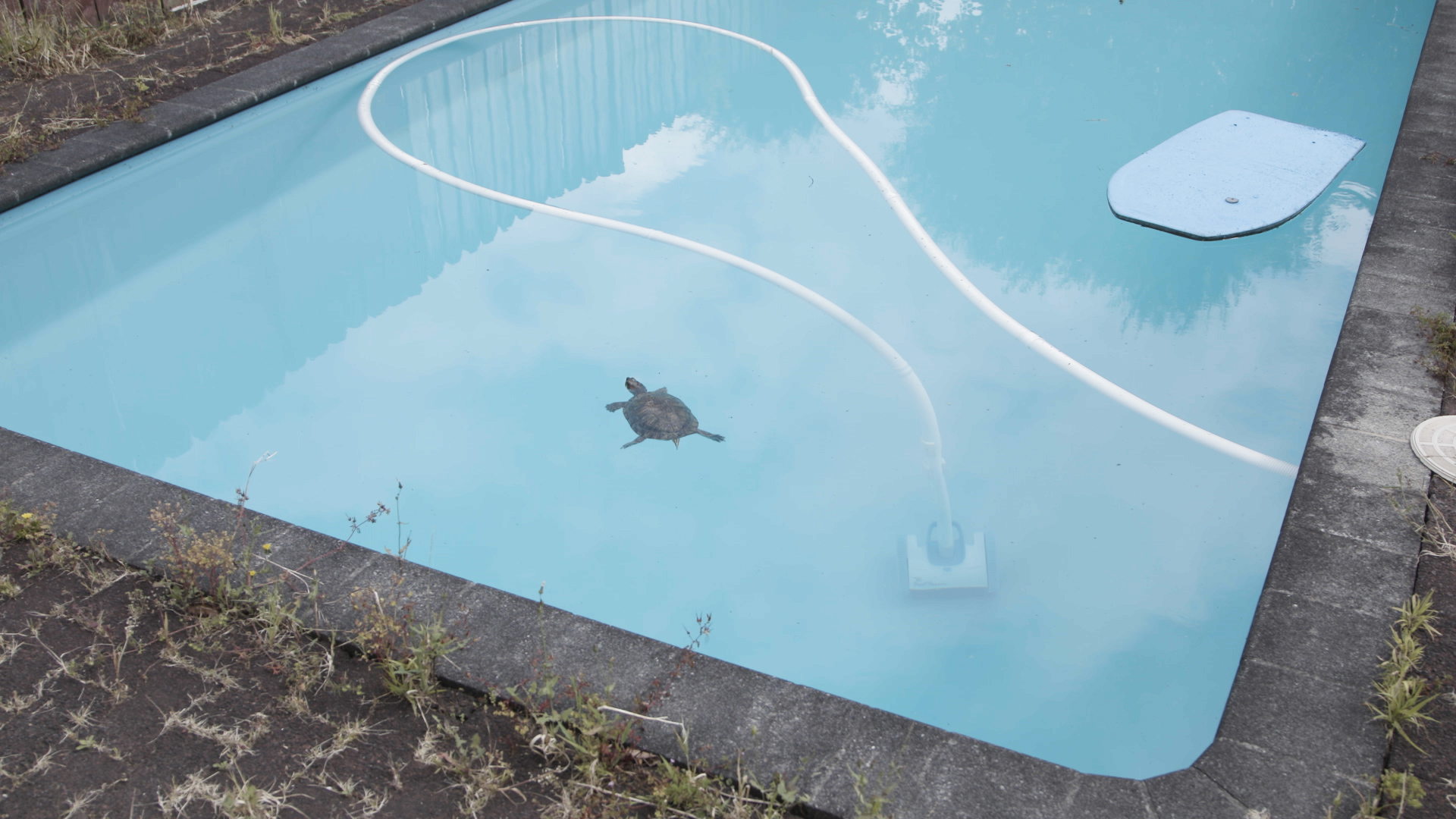
To Waitakere Hospital’s Waiatarau Acute Unit. The act under which Tammara was incarcerated allows for someone who is “mentally disordered” to be “made subject to the provisions of the Act, irrespective of whether they also have a co-existing substance use disorder.” Although she denies it, Tammara’s attendant mental health issues may well have warranted her being put away for the initial five days of “assessment and treatment” the act allows, but they also forced her to detox from synthetics—a drug “harder than heroin” to quit—in a facility not equipped to deal with it. It wasn’t a pleasant experience. “I thought that shit only happened on movies, but nah, that shit’s happening right down the road from us as we speak right now. Those places just make you crazier, eh, they make you want to fucking go insane. They’ll rark you up and then they’ll go like, ‘Why are you like this? You need to calm down. You need to breathe.’”
I spoke to Tammara several times during her detention. We had first met about a month before, when a mutual acquaintance introduced us on a sunny second storey West Auckland balcony, the suburbs rolling over the hills beyond. She showed me her stash—the best part of an ounce of synthetics in a clear ziplock bag; she told me how regularly she needed to smoke to keep nausea from creeping up on her: “I couldn’t go half an hour without starting to be sick.” Accordingly, her life was an organisational nightmare: every appointment or activity—getting her nails done at WestCity Mall, say, or a meeting with her social worker or probation officer—had to be bookended on either side by an immediate smoke.
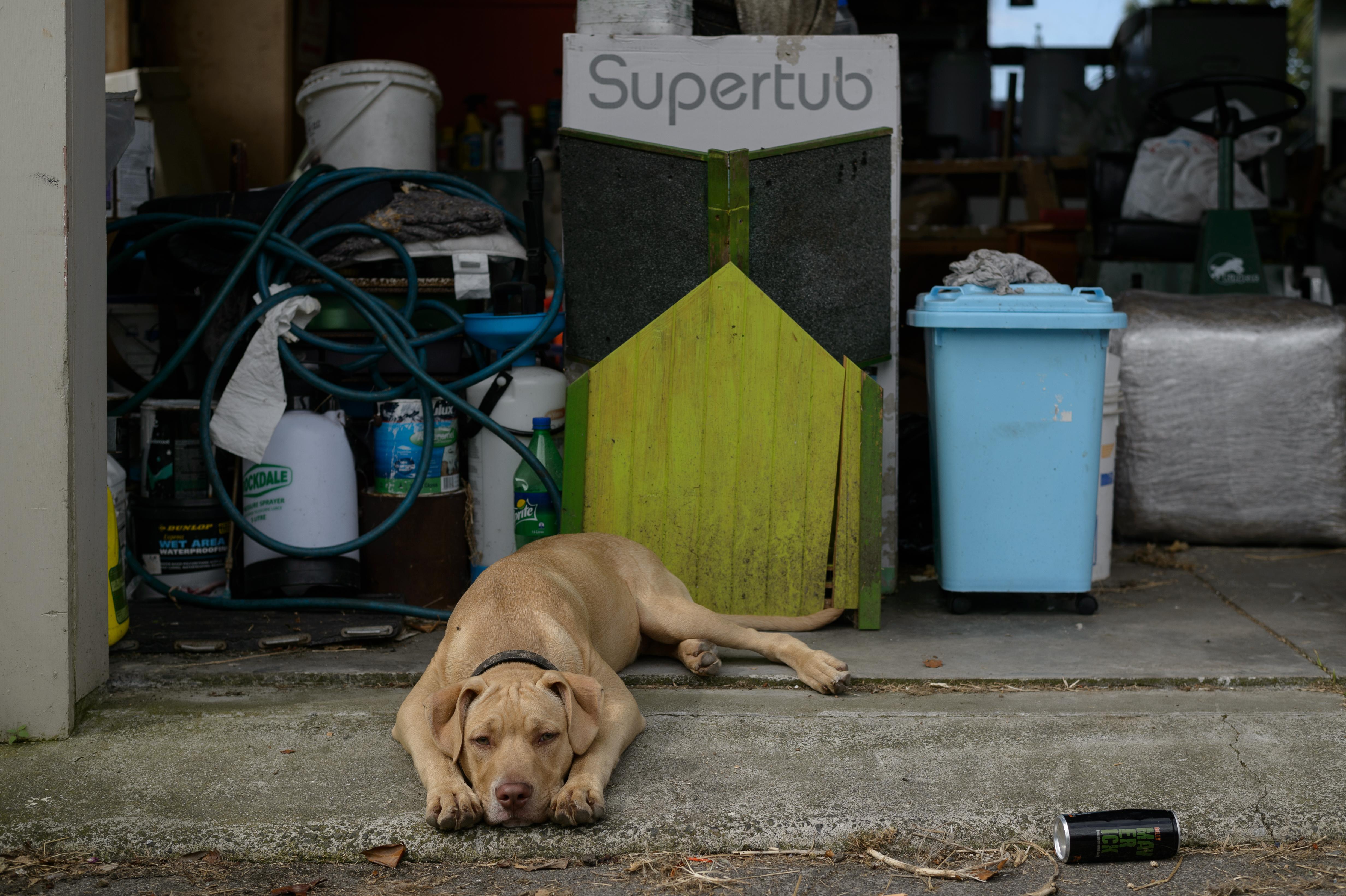
On those calls, the desperation—as that first half hour stretched into a day, then two, then three—was audible. She cried, begged for help getting her out, and pleaded for a ciggie. She broke down further at any mention of her animals or family, railed against the perceived coalition that had landed her in detention, and sobbed as she shared her belief that she was never getting out: that life now consisted of four walls, visiting hours, and little plastic cups of pills to be swallowed in front of nurses.
She was released after five days, days free of synthetics for the first time in years, but traumatised by the experience and yet more distrustful of officialdom.
For Tika, watching Tammara’s addiction peak was terrifying. It had fluctuated in severity for years—once, she even managed to quit by herself for a week or so—but by the time of her incarceration, she was smoking eight to 10 cones through a bucket bong upon waking every morning; this came at the height of last winter, when Police made the first announcement that synnies were killing users. “It scared the shit out of me,” Tika says. “I was quite aware of that because I used to say, in her 13-to-15-year-old years, when she was [sleeping rough] in Henderson, ‘Tammara, I think I’ll find you dead in a ditch.’ And when this [the deaths] was starting to happen, I said, ‘I’m going to say one thing to you. I think it might be dead-in-a-ditch time again.’”
Something had to happen, and even though Tika recognises that Tammara’s treatment was far from ideal, circumstances demanded a drastic intervention, and previous experience had soured her expectations of other avenues for treatment. “It was like under the carpet or in the back door sort of thing. It was not really the way it should have been done.”
I spoke to Dr Vanessa Caldwell, the national manager of Matua Raki, an organisation contracted by the Ministry of Health to develop resources and provide training for those working in the addiction sector, and mentioned the circumstances of Tammara’s detention. She said it sounded like an example of the silo effect—whereby information is shared inefficiently between or within organisations—which can mean “that someone isn’t actually getting the root of their issues addressed in a timely way. And that means they may be placed in places which are not that suitable.”
There is currently room for about 50,000 people nationwide, but estimated demand is at least twice that.
She told me there were a large number of features about the addiction-services system that need to be addressed, not least the difficulty of finding that initial help. “Nobody actually knows what number to ring or where to go straight up for help. People like me find it difficult to find which is the current number to ring, so how the public knows I’ve got no idea.”
Capacity, Caldwell says, also remains a problem. She says there is currently room for about 50,000 people nationwide, but estimates there is demand for at least twice as many. Ben Birks Ang, who as the National Youth Service Advisor for both Odyssey House and the New Zealand Drug Foundation, works on the frontline with young addicts, agrees there is a need for greater investment.
But Birks Ang says that will only go so far: there also needs to be a shift in thinking from what he calls our “War on Drugs mentality”. He notes the tendency to portray drug users—particularly users of synthetics and methamphetamine—as occupying only one end of the spectrum, as people whose lives have collapsed around them as a result of their drug use. “What that means for a teenager who is sitting there using substances, in particular synthetics or something like that, they’ll see all these extreme examples and go, ‘Well I’m not actually as bad as that.’ If they’re only seeing that, they think ‘I might not need to change now’ until it gets to a point when it’s very serious. And then it’s about needing an urgent, more crisis-style response, which isn’t necessarily the easiest way to make changes.”
Accordingly, that investment, he says, needs to be across the treatment spectrum: residential care, community support, home detox. Caldwell wants a system with the ability to be more reflexive, so when new substances—like synthetics—enter the market, the response can be swift. It’s about getting, she says, “good information about where there are high levels of need and where we can immediately channel resources to address that and get support to where it’s needed most.” For that, she pins her hopes on the government’s Inquiry into Mental Health and Addiction, announced earlier this year.
The often-symbiotic nature of mental health and substance abuse, the phenomenon so evident to Tika when she looks around at her granddaughter’s acquaintances, was noted also by Prime Minister Jacinda Ardern when she announced the details of the Inquiry into Mental Health and Addiction as part of the new government’s plan for its first 100 days in office. “Mental health and addiction,” the press release read, “are often interlinked—they need to be considered alongside one another.”
She noted, too, that demand for services had grown rapidly—in 2016/17, more than 170,000 people used mental health and addiction services, a growth of 71 percent on a decade earlier. Of course, not everybody seeking treatment for addiction will need residential care, but in the 2016/17 year there were only 482.5 district health board-contracted beds available across the country for in-house treatment. Given the critical nature of the synthetics crisis—at least 25 dead—I asked Minister of Health Dr David Clark what needed to change. But he wouldn’t be drawn, saying only, via email, that “The Inquiry into Mental Health and Addiction services has been given broad terms of reference. The Inquiry is in its very early stages and I do not want to pre-empt its work.”
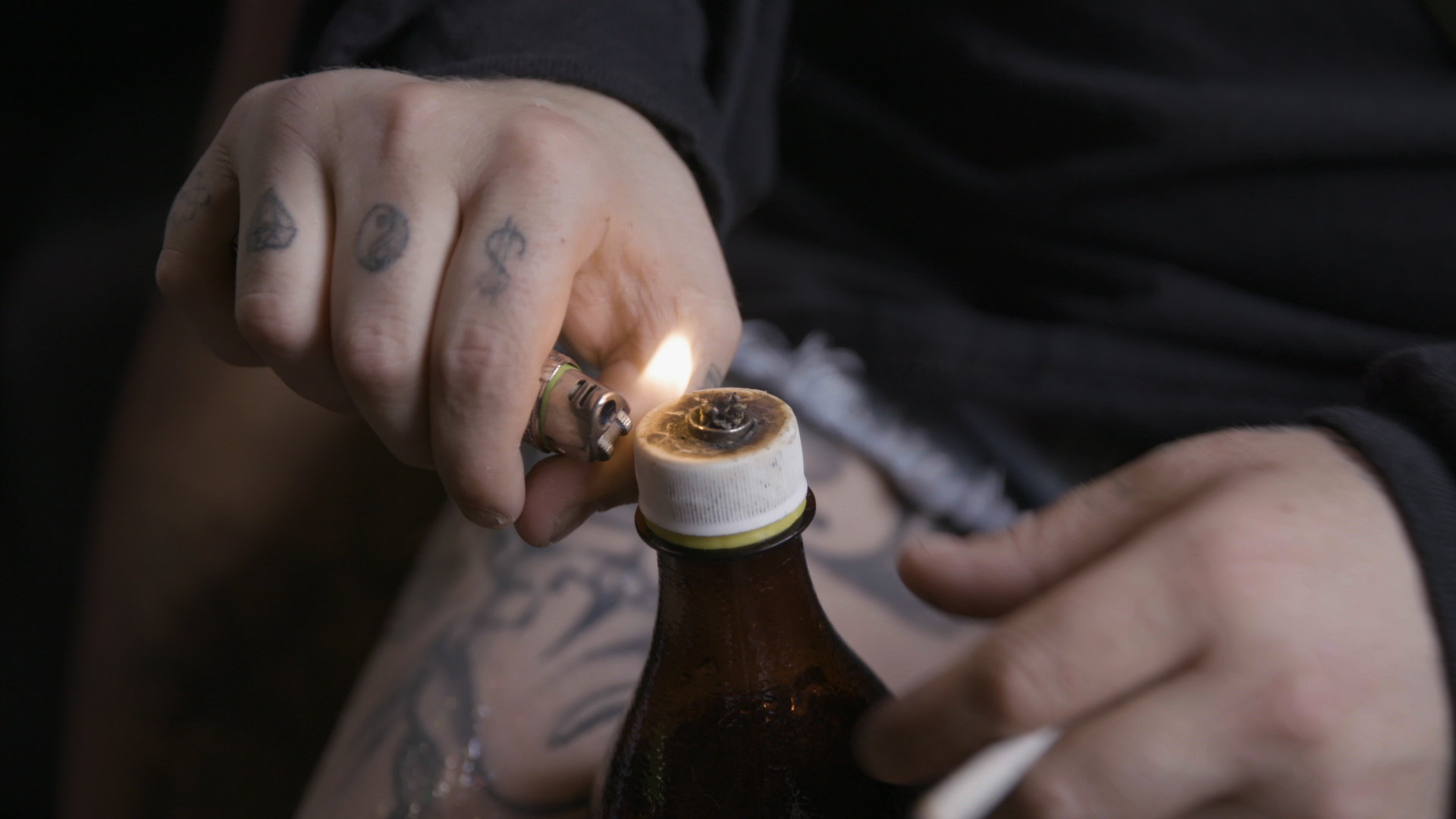
And yet people continue to die. Take the case of Memphis Pitman, whose story was posthumously relayed by his mother, Natasha Sadler, to RNZ. Pitman suffered from schizophrenia and smoked synthetics to self-medicate—it was “the only thing that would shut the voices off”. Late last year, two of his friends died after smoking synthetics and Pitman sought treatment for his addiction, only to be met with a familiar refrain: there are no beds. He, too, died not long after.
“What it means,” Sadler told RNZ, “is we just need money put there. Stop building prisons—build places where you can get our people well.
“My son died—it’s the ultimate cost to pay.”
By that brutal metric, Tammara is lucky. But she’s lost a lot to synthetics: her promise as a figure skater—she once placed fourth in the country for her age group—an older friend she regarded as another mother who died after smoking, and, for five days, her freedom. Her forced abstinence, however, didn’t last. After being clean for some two months, Tammara relapsed when a synthetics-smoking friend came to stay. There were parties, drinking. “Things just started getting to me again and I couldn’t sleep… so I had some, and then I bought some, and then I bought some more.” She slipped into old habits, back into that “negative way of thinking, like fuck this, fuck it all.”
The day she told me this, Tammara was hysterical. She was in tears when I arrived and a screaming match with Tika raged over the paving between her sleepout and the house. Her boyfriend Tremayne met me at the gate with a plate of steak and eggs in one hand. He said he’d let Tammara know I was there. And later, pacified by weed, Tammara was happy to talk.
She is determined to not let that weekend of relapse be the end of her journey towards recovery; the memory of forced detention, and her separation from all she loves, is her motivation. “I was like, ‘Fuck this, I can’t do this. This is either going to make me or break me.’ I can’t let my Sasha down,” she said, taking an affectionate handful of the big dog’s scruff.
*Not her real name
This article originally appeared on VICE NZ.
Watch our documentary Syn City, New Zealand’s Synthetic Drugs Epidemic here.
Follow James on Twitter
More
From VICE
-

Credit: Dmytro Betsenko via Getty Images -

Screenshot: Nintendo -

(Photo by Jaque Silva/NurPhoto / Getty Images) -

Screenshot: Goodaboutgames
